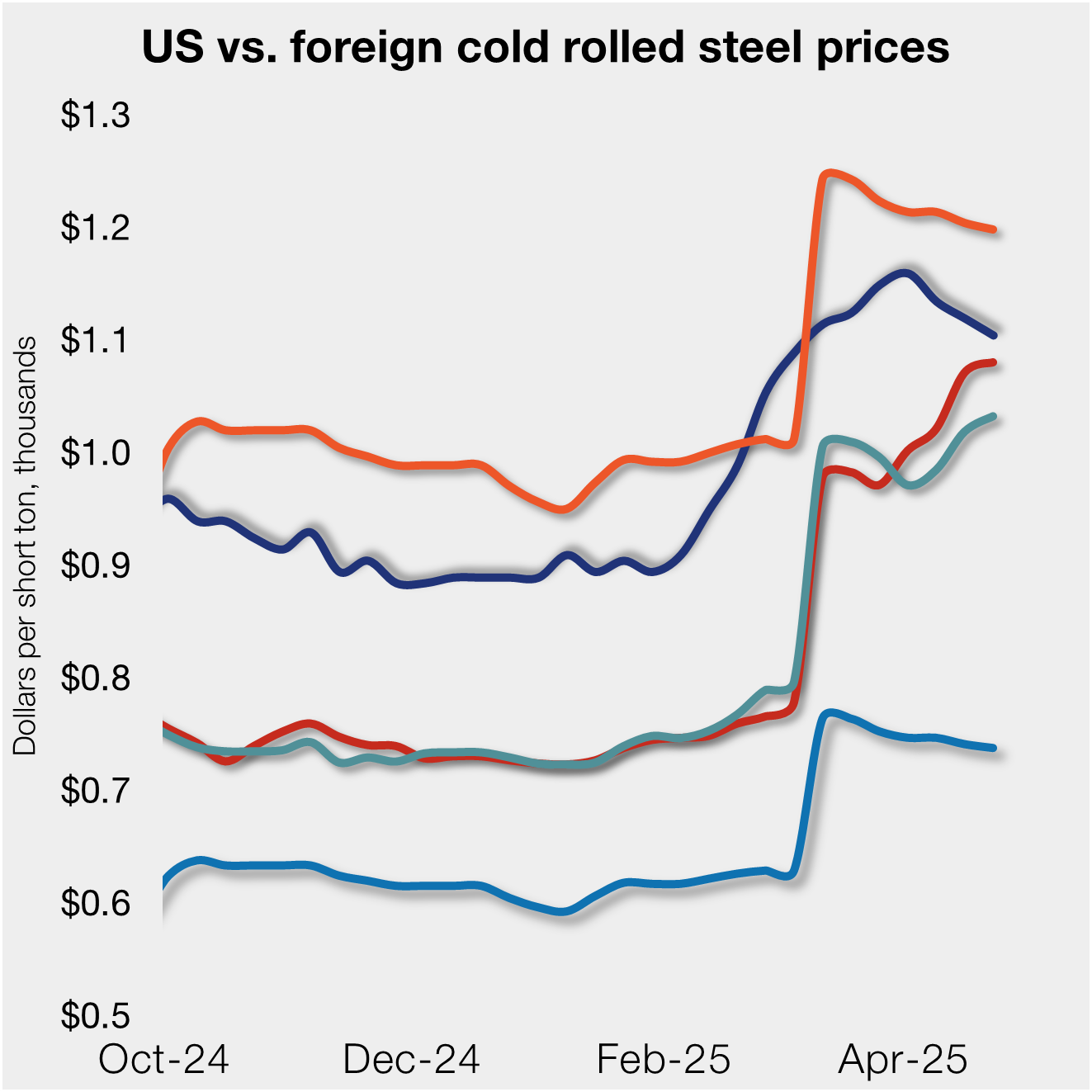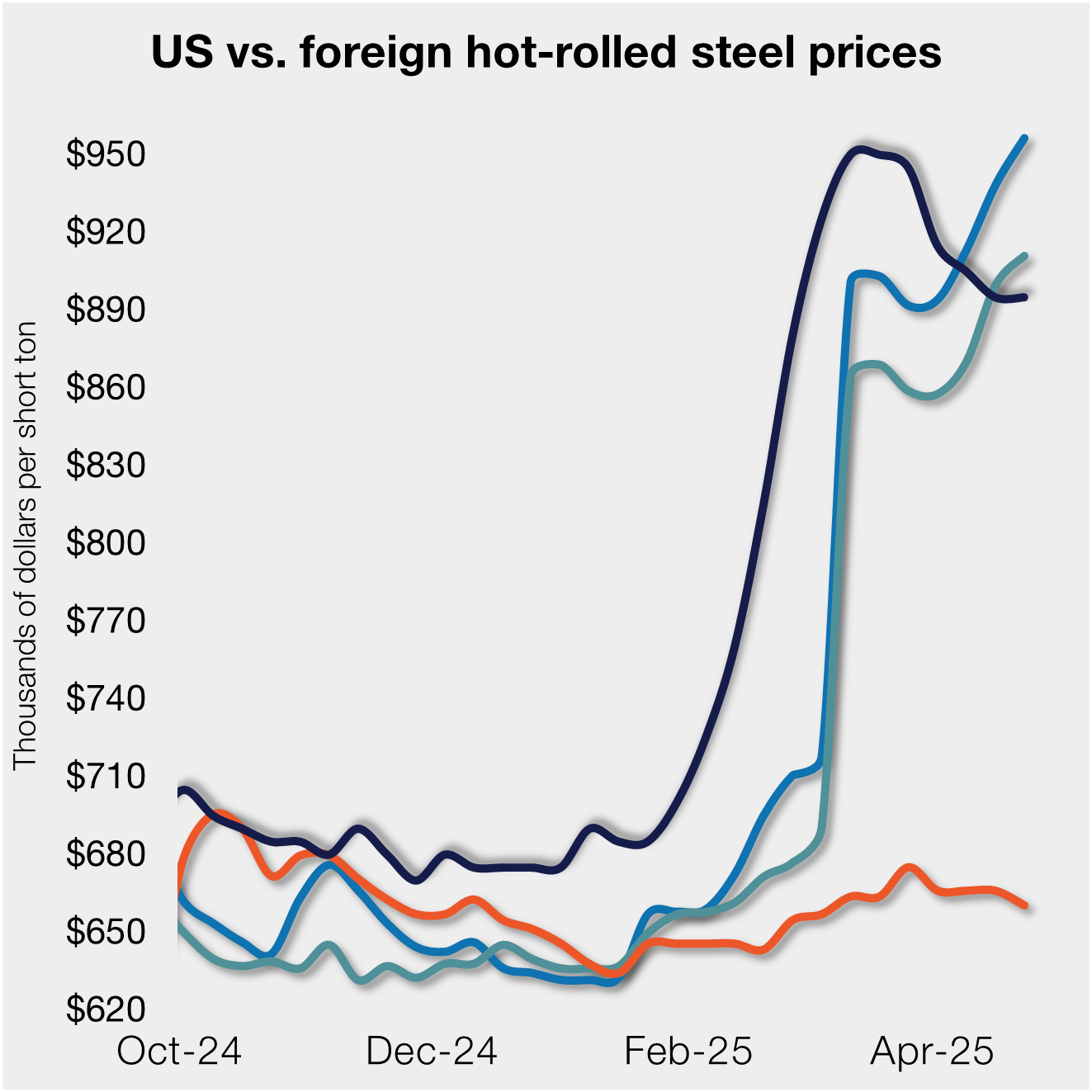Steel Products

Leibowitz: Supreme Court Denies Hearing on Section 232—What’s to Come
Written by Lewis Leibowitz
June 23, 2020
Trade attorney and Steel Market Update contributor Lewis Leibowitz offers the following update on events in Washington:
On Monday, the Supreme Court announced its decision not to take the case of American Institute for International Steel (AIIS) v. United States, a case challenging the constitutionality of Section 232 of the Trade Expansion Act of 1962, as amended. This effectively ends the challenge on that ground to Section 232. Other challenges are still around and are likely to result in court decisions this year and next.
AIIS argued that the statute delegated legislative authority to the president to decide whether to impose tariffs and other trade restrictions without limitation, or, as lawyers say, without “intelligible principles.” This was always a steep hill to climb, for two reasons—first, the last time the Supreme Court struck down a statute because it delegated too much power to the president was in 1935, when it struck down the National Industrial Recovery Act, the signature New Deal legislation.
ARTICLE CONTINUES BELOW
{loadposition reserved_message}
Second, the Supreme Court already had decided in a 1976 case that Section 232 as it then existed was constitutional because there were “intelligible principles” limiting the president’s authority. Both the Court of International Trade and its appellate court, the Federal Circuit, ruled that the 1976 Supreme Court case was binding precedent that no lower court could ignore. If the doctrine was going to succeed, the Supreme Court itself would have to overrule that old case. On Monday, we found out that the Court was not going to do that.
Section 232 is far from out of the woods. There are bills in Congress to constrict the president’s authority under Section 232 to impose tariffs and other restrictions in the name of eliminating a threat “to impair the national security.” Perhaps more immediate and more likely are several court cases that challenge the president’s actions on steel and aluminum. More cases are likely to follow, if the secretary of Commerce and the president further restrict imports in pending cases on autos and auto parts, transformers and components, mobile cranes and vanadium. There will also undoubtedly be litigation if the president reimposes aluminum tariffs on Canada, as he has recently threatened.
The courts have not been kind to the current administration’s signature initiatives and steel and aluminum may also fall victim. Recently, the Supreme Court, in setting aside the elimination of the DACA program, made new and expansive law on judicial review of executive decisions.
Litigation is always uncertain, of course, and no predictions regarding the outcome of any case will be made here. But for those who follow these cases, there are straws in the wind.
The Law Office of Lewis E. Leibowitz
1400 16th Street, N.W.
Suite 350
Washington, D.C. 20036
Phone: (202) 776-1142
Fax: (202) 861-2924
Cell: (202) 250-1551

Lewis Leibowitz
Read more from Lewis LeibowitzLatest in Steel Products

Nucor maintains plate prices
Nucor aims to keep plate prices flat with the opening of its June order book.

US rig count up, Canada declines
Oil and gas drilling activity was mixed this week, according to Baker Hughes. US rig counts expanded for a second straight week, while Canadian activity continued its seasonal slowdown of eight consecutive weeks.

US, offshore CRC prices continue to diverge
US cold-rolled (CR) coil prices declined again this week, slipping for a third straight week. Most offshore markets did the opposite, moving higher this week.

S232 lifts EU HR price over US, Asian HR still well behind
Domestic hot-rolled coil prices were flat this week after dropping for four straight weeks. Most offshore markets bucked the trend and gained ground.

SMU Steel Demand Index dips into contraction
SMU’s Steel Demand Index has moved into contraction, according to late April indicators. The slowdown comes in response to growing tariff uncertainty after the index reached a four-year high in late February.
